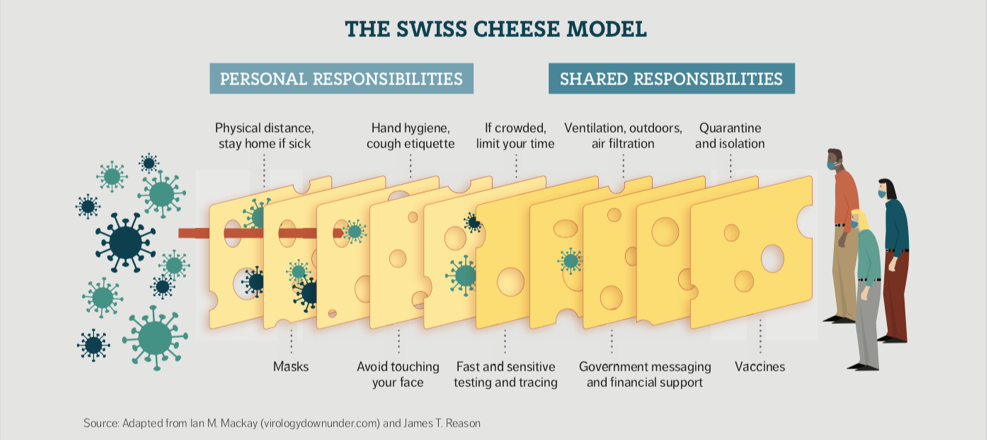COVID-19 Booster Shots Alone Might Not Stop Delta and Other Variants
Booster shots are great, but the way back to our normal lives involves a multi-pronged approach to infection prevention.
Last week booster shots were approved—and are now available—to people with compromised immune systems, thanks to action taken by the Food and Drug Administration and the Centers for Disease Control and Prevention as evidence mounts that the efficacy of COVID-19 vaccines wane over time.
This week, plans are in the works to offer booster shots come October to other higher-risk populations in the United States, including infection preventionists and other health care professionals, residents in nursing homes, and Americans aged 60 or older. In other words, the booster shots will be offered in more or less the same order in which the original vaccines were distributed.

But as Sakia V Popescu, PhD, MPH, MA, CIC, a member of Infection Control Today®’s (ICT®’s) Editorial Advisory Board (EAB) wrote in the December 2020 issue of ICT®, effective infection prevention and control should follow the Swiss cheese model championed by virologist Ian Mackay, PhD. Popescu wrote: “In one succinct image, this captures what we do in infection prevention—stress the additive layers that are needed to reduce the spread of infection. From masking to government messaging and vaccines, these layers all work cohesively to reduce the risk of not only COVID-19 infection, but also transmission. Really, this is a concept we have been reinforcing and growing in the field of infection prevention—a wholistic approach to disease prevention.”
Talk about booster shots over the weekend grabbed headlines. Francis Collins, MD, PhD, the director of the National Institutes of Health, said of the delta virus that “this is going very steeply upward with no signs of having peaked out,” according to the Associated Press (AP). The US saw an average of 129,000 new infections a day over the last seven days, according to the Johns Hopkins Coronavirus Resource Center. That’s a 700% increase from the beginning of July and the number could rise to 200,000, which has not been seen since the January/February surge.
Francis Collins, MD, PhD

Thanks to the vaccines, we will not see the horrendous death rates of those surges. But as ICT® EAB member Kevin Kavanagh, MD, has argued for over year, mortality isn’t the only metric that needs to be taken into account. For instance, medical experts still don’t know exactly what the long-term effects of COVID-19 are. In a recent interview with ICT®, Kavanagh pointed out that “COVID-19 is not just respiratory, it affects every organ of the body. This is a serious type of infection. And we need to be focusing on trying to keep this virus from spreading, plus protecting our young.”
Anthony Fauci, MD, the director of the National Institute of Allergy and Infectious Diseases and President Biden’s chief medical advisor, said that “if it turns out as the data come in, we see we do need to give an additional dose to people in nursing homes, actually, or people who are elderly, we will be absolutely prepared to do that very quickly.
But that won’t be enough, Kavanagh argues in an article scheduled to be printed in an upcoming issue of ICT®.
“SARS-CoV-2 has continued to evolve,” Kavanagh writes. “It has now become evident that with each emerging variant, the virus has appeared to progressively become more infective. Variants which increase viral load may also increase transmissibility and the opportunity to mutate, along with overwhelming a host’s immune system and becoming more virulent.” And there seems to be wave after wave of variants.
Source: World Health Organization

Kavanagh adds that “to make matters worse, SARS-CoV-2 is infecting a number of animals, including cats, large cats, dogs and gorillas. Most recently, concern has been raised that it may have found an animal host in white tail deer, with SARS-CoV-2 antibodies identified in 40% of surveyed animals.”
Peter Hotez, MD, PhD, professor of the departments of pediatrics, molecular virology & microbiology and health policy scholar at Baylor College of Medicine, tells ICT®’s sister publication Contagion that recent data has indeed suggested that COVID-19 vaccine-induced immunity from infection is “not as high as it was.” It remains unclear whether that is due to waning immunity or decreased vaccine effectiveness versus the delta variant—a matter which is difficult to discern because the delta outbreak is occurring well into the post-vaccination phase for most adults in the US.
“Right now, the data are showing that the protective efficacy against hospitalization and deaths are holding, but the question is will that start to slip over time as well, and at what point do we pull the trigger?” Hotez said. “And how generalizable do we make it—do we keep it restricted over a certain age, are there other criteria, or do we just open it up the whole population?”
Kavanagh has always said that COVID-19 vaccines alone are not a panacea in stopping the pandemic. And although booster shots are crucially important, one should also not rely on booster shots alone, either.
There must be a multi-pronged approach to COVID-19 if we have any hope of returning to our pre-COVID normal lives, Kavanagh writes in his article. That includes:
- Upgrade recommendations for mask usage and to use N95 or KN95 masks whenever possible.
- Everyone who can needs to become vaccinated. Similar to Israel, we should fast track approval for mRNA boosters to those who are at higher risk, including those who are immunosuppressed and over the age of 60 and 5 months out from vaccination.
- Upgrade building ventilation systems to increase air exchanges and air sanitization.
- Expand testing capabilities to be able to test frontline workers and school children at least twice a week, and other workers at least once a week.
- Limiting sizes of gatherings, including podding in schools and plans for permanent hybrid instruction to limit class sizes.
- Businesses, including restaurants, need to offer online ordering along with curbside pickup and when possible, home delivery.
- Everyone needs to be vaccinated. Mandatory vaccines should be required in many settings, including health care. Vaccine passports or green cards are being implemented in Israel and France and need to be implemented in the United States.